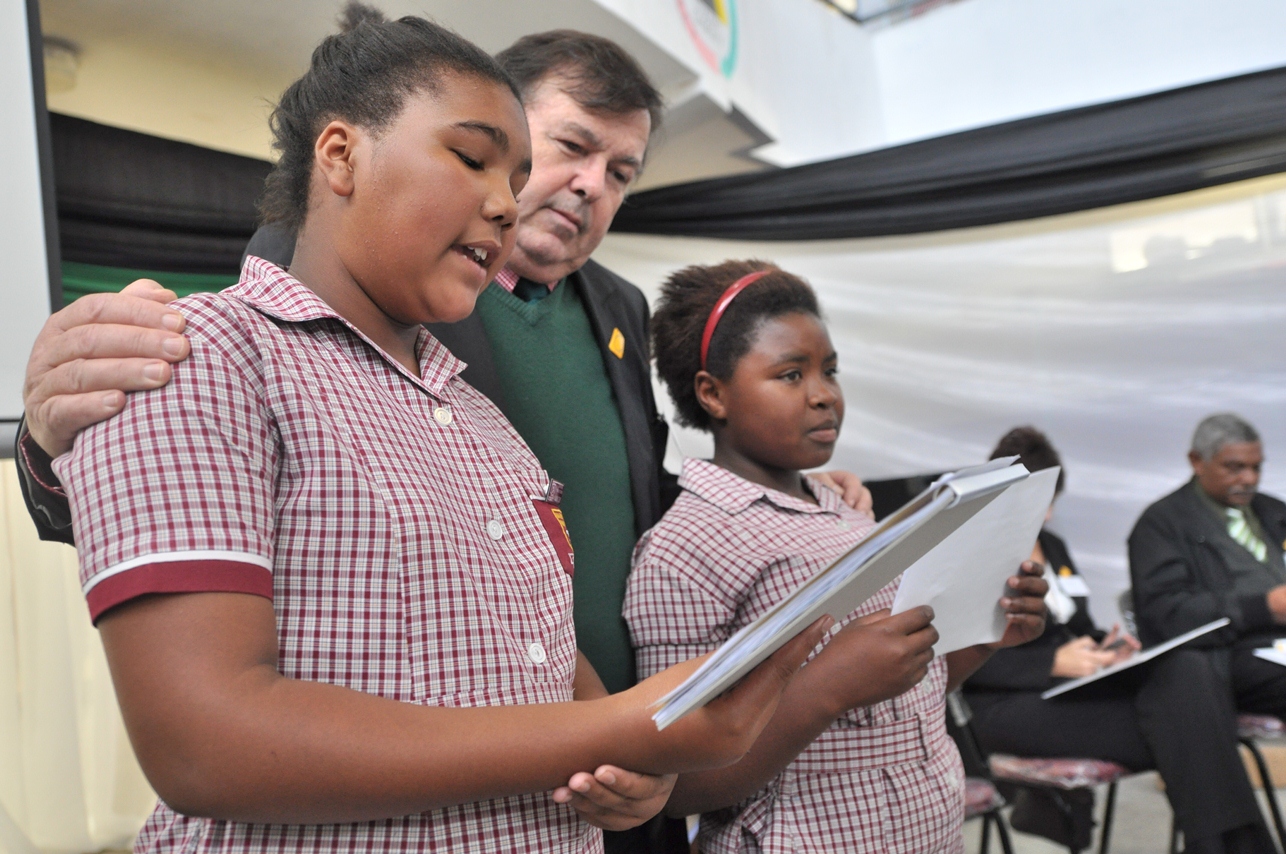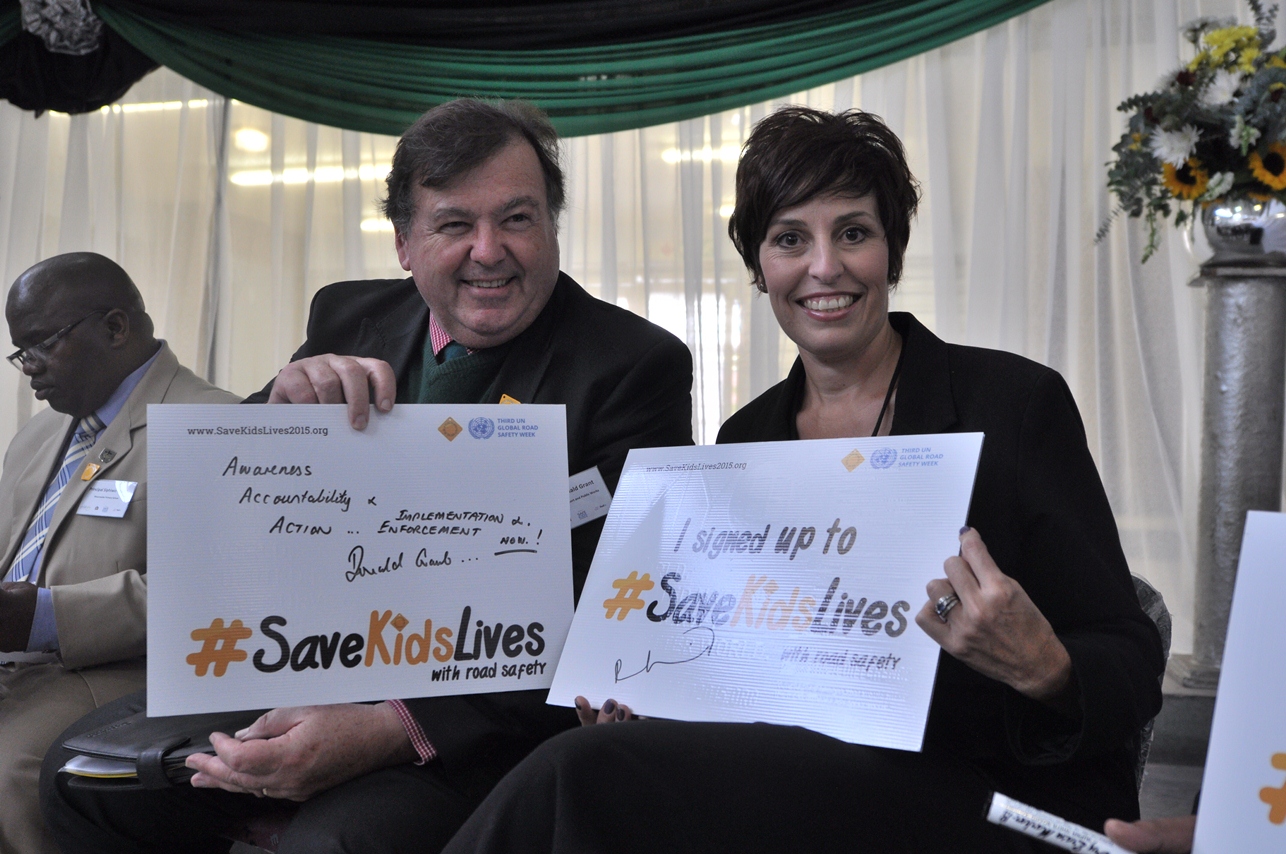
News
Global Road Safety Week to Focus on Child Pedestrian Safety
Statement by Donald Grant, Minister of Transport and Public Works
In the Western Cape, the leading class of fatalities among road users are pedestrians, accounting for nearly half of the total road deaths recorded in the Province. What we also know is that, according to the World Health Organisation (WHO), road deaths are now the leading cause of premature deaths among young people aged 15 to 29 and rank high among the leading causes of deaths globally - a sobering reality for us all.
Children, particularly small children, continue to bear the brunt of irresponsible and reckless behaviour seen on our roads, with many having been either knocked down or killed in the Western Cape this year alone.
Road traffic injury is the leading cause of death for children aged five to 14 in South Africa, and in the Western Cape, child pedestrians make up a large majority of the children killed.
According to Statssa’s 2013 National Household Travel Survey, 50.4% (845 000) of the Western Cape’s 1.676 million population that attend an educational institution walk to and from those institutions, with the remainder being transported by either private or public transport.
All of them are, in one way or the other, vulnerable to serious injury or death at the hands of reckless and irresponsible motorists. We must do all we can to change behaviours and attitudes on our roads and protect children from the senseless injury or death that far too many are victim of.
As part of our Safely Home campaign, we have been committed to addressing the very serious threats to safety that children face on our roads. During October, the month dedicated to child pedestrian safety as part of our road safety calendar, we implemented various interventions that continue to have a positive effect on reducing the rate at which young people are being knocked down or killed. These interventions included:
- The unveiling of child pedestrian safety posters at areas in the Metro known to have high incidents of children being knocked down and killed.
- Safely Home Road Safety Workshop focussing on child pedestrian safety.
- The launch of the Child Pedestrian Fatalities Map.
- Scholar Transport Operations with the City and Provincial Traffic Services.
- Scholar Patrols focussed at educating children on how to be safe when crossing the road, with Education Minister Schäfer.
- A radio campaign on Radio Zibonele and Umhlobo Wenene, to carry this very important message to the areas most affected.
The Walk This Way Project, launched today in partnership with ChildSafe and FedEx, adds to the various initiatives that we have entered into as road safety partners to address this very serious problem, and I have no doubt that our efforts will continue to yield positive results and save young lives. The project’s main objectives include:
- To increase the road safety knowledge of students who participate in the in-school education sessions.
- To increase the number of students crossing at crosswalks or dedicated safe pedestrian crossings.
- To encourage motorists to slow down around schooling areas with a high number of child pedestrians.
- To decrease the number of road injuries and deaths reported around schools.
- To recruit and sign agreements with 10 community partners to implement the newly designed ‘Slow Down’ programme.
The project will initially be focussed on five selected schools situated in the Delft, Kraaifontein and Khayelitsha areas, where statistics have shown that incidents occur regularly.
This project will be supported inside the classroom through curriculum based road safety education, through our partners at the Western Cape Department of Education. The importance of early education about road safety is evident in the Life Skills curriculum of the first five years of schooling. In Grade R, learners cover topics related to “Dangerous places to play and safety on the roads”.
In Grade 2, four hours are allocated to road safety under the headings:
- Rules for road safety.
- Pedestrians.
- Cyclists.
- Passengers.
- Road signs for pedestrians and cyclists.
- Scholar patrols.
- How traffic officials help us.
In Grade 3 ‘Safety in public areas’ includes the topics:
- Dangerous places to play – such as roads – and safe travel on taxi and trains.
- Safe train and taxi travel.
The Grade 4 curriculum (CAPS) allocates 1 ½ hours in term 4 to cover “Traffic rules relevant to road users: pedestrians and cyclists”.
There is also weekly reading by learners about traffic rules relevant to road users.
The time will come when our children will be safe on our roads, but it won’t come easily. We can only get there if we are willing to join hands, as communities, as government, as religious institutions, and take a united stand against the behaviour that is killing our children. We must do all we can to change behaviours and attitudes towards road safety and ensure that we all do not become another statistic on our roads.
Follow Safely Home on Twitter under the hash tag #ItCanWait.
Siphesihle Dube
Spokesperson for Minister of Transport and Public Works, Donald Grant
Tel: 021 483 8954
Cell: 084 233 3811
E-mail: siphesihle.dube@westerncape.gov.za





